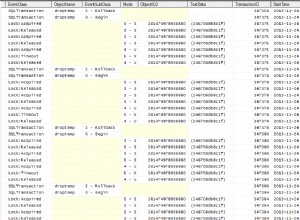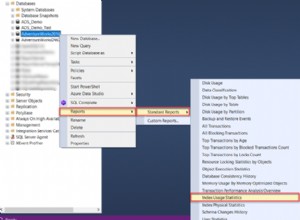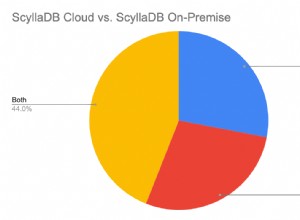Czy możesz sprawdzić następujące zapytanie, wszystkie sprawy w ramach with klauzuli, a następnie stwórz z niej unię.
Edytuj:- Po dyskusji i wyjaśnieniu z OP na czacie
Nie potrzebujemy full join więcej i dostęp do tabeli dla każdego przypadku jest przepisany.
-- case 1
-- when fund_isin with member_ratio = 'O' present in both is_id and is_id_tst table
-- and the value of is_id.member_ratio < is_id_tst.memebr_ratio
-- logic --
-- the from clasuse says take all the records from is_id table
-- by corelate the fund_isin (t1.fund_isin = t.fund_isin)
-- the subquery then finds record by joining both table is_id and is_id_tst for member_ratio = 'O'
-- and where the member_ratio is smaller (is_id_tst.member_ratio > is_id.member_ratio)
-- extra condition on is_id_tst table is the member_ratio value should be greater than 0 for member_descr='O'
WITH ratio_lower_is_id
AS
(SELECT *
FROM is_id t
WHERE EXISTS
(SELECT 1
FROM is_id_tst t2
JOIN is_id t1
ON t2.fund_isin = t1.fund_isin
WHERE t1.fund_isin = t.fund_isin
AND t2.member_descr = 'O'
AND t1.member_descr = 'O'
AND t2.member_ratio > 0
AND t2.member_ratio >
t1.member_ratio)
),
-- case 2
-- applies the same logic as in case 1 but then take records from is_id_tst table
-- where the member_ratio having lower value for record with member_descr='O'
-- in comparison with the record present in is_id table for memebr_descr='O'
ratio_lower_is_id_tst
AS
(SELECT *
FROM is_id_tst t
WHERE t.member_ratio > 0
AND EXISTS
(SELECT 1
FROM is_id t2
JOIN is_id_tst t1
ON t2.fund_isin = t1.fund_isin
WHERE t1.fund_isin = t.fund_isin
AND t2.member_descr = 'O'
AND t1.member_descr = 'O'
AND t2.member_ratio >
t1.member_ratio)
),
-- case 3
-- take all records from is_id_tst table for all each unique fund_isin
-- where the member_ratio value is < 0 for record member_descr='O'
-- and is avaialble in is_id_tst table irrespective of what record for the same
-- fund_isin available in is_id table
ratio_minus_is_id_tst
AS
(SELECT *
FROM is_id_tst t
WHERE EXISTS
(SELECT 1
FROM is_id_tst t1
WHERE t1.fund_isin = t.fund_isin
AND t1.member_descr = 'O'
AND t1.member_ratio < 0)
),
-- case 4
-- take all the records from is_id table
-- where the fund_isin is not available in is_id_tst table
only_in_is_id
AS
(
SELECT *
FROM is_id t1
WHERE NOT EXISTS
(SELECT 1
FROM is_id_tst t2
WHERE t2.fund_isin = t1.fund_isin)
),
-- case 5
-- take all the records from is_id_tst table
-- where the fund_isin is not available in is_id table
only_in_is_id_tst
AS
(
SELECT *
FROM is_id_tst t1
WHERE NOT EXISTS
(SELECT 1
FROM is_id t2
WHERE t2.fund_isin = t1.fund_isin)
)
-- finally once all the sets as per each case available
-- take each of them and do a union all for the final result set
-- one level sub query required only if we want to sort the result otherwise can be removed
-- and only union all of all sets from with clause is enough
select *
from
(
-- case1
select *
from ratio_lower_is_id
union all
-- case 2
select *
from ratio_lower_is_id_tst
union all
-- case 3
select *
from ratio_minus_is_id_tst
union all
-- case 4
select *
from only_in_is_id
union all
-- case 5
select *
from only_in_is_id_tst
)
order by fund_isin;




